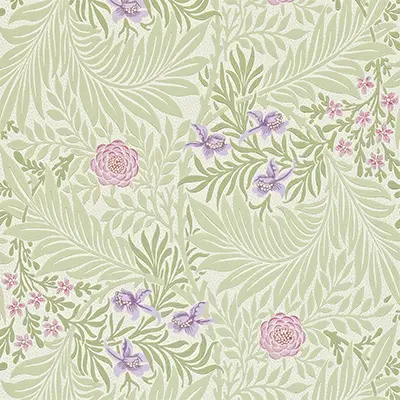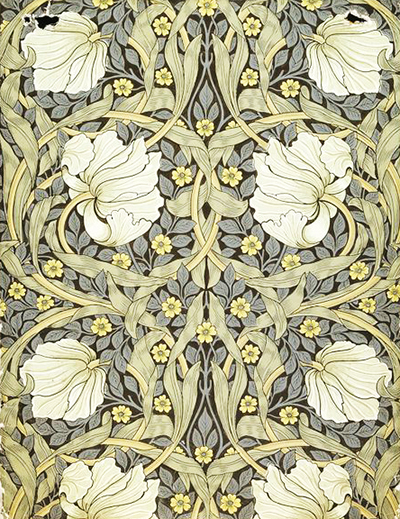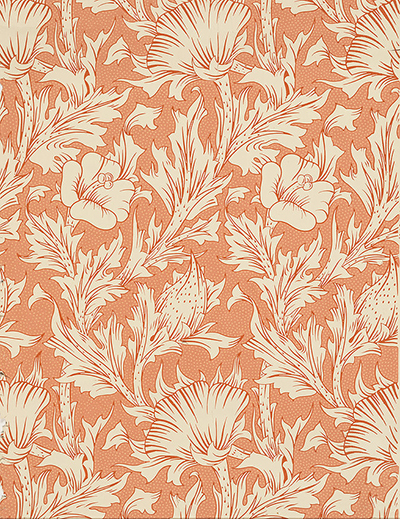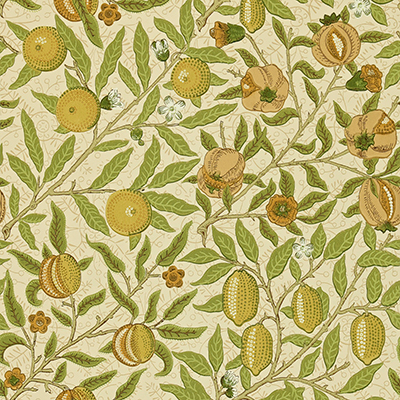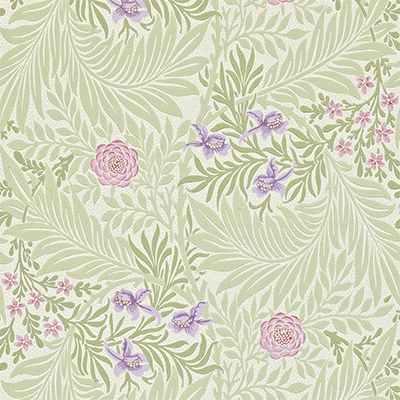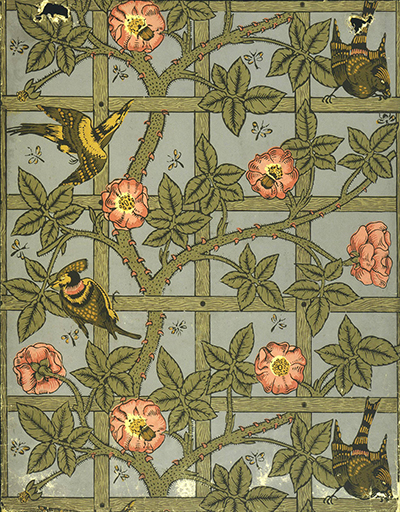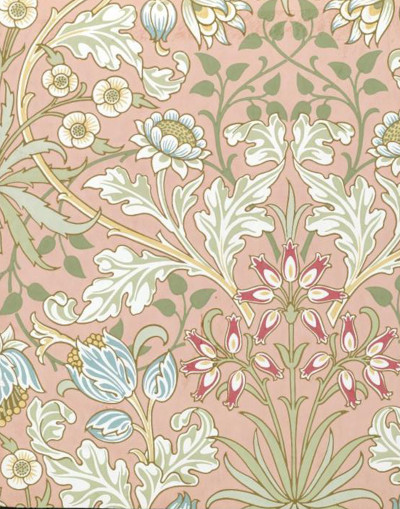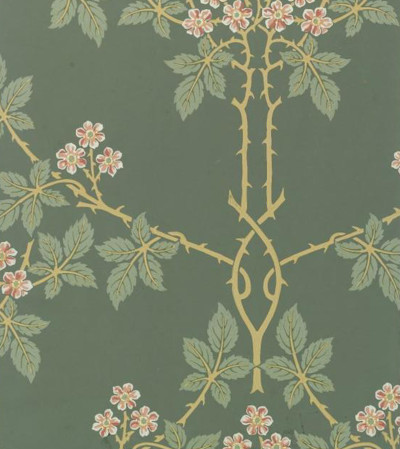William Morris was passionate about nature from an early age and combined this interest with his strong technical skills to create an assortment of different floral patterns, some of which were used to produce wallpaper.
One impressive aspect of his career is that several of these wallpaper designs have remained in production ever since, still being used today. For someone's work to survive changing fashions and tastes over so many generations is a sure sign of his brilliance as an artist and also the persistent interest that exists in nature within art. The same can be said for the likes of landscape painters such as Constable and Turner but William Morris' work has proven to be far more versatile in the way in which it can translate into different types of products. Wallpaper is just one example of that, with fabrics, furniture and textiles also making use of his impressive skills in illustration.
Wallpaper was a particularly popular product during Victorian times. This was a period of huge social change within the UK and tastes were changing and developing - families were starting to enjoy new opportunities that had previously been limited to the richest in society. More attention was being taken with regards interior design and wallpaper offered a wider audience the change to spruce up their homes on smaller budgets. This greater accessibility brought artists like Morris very much into the mainstream and also offered them a chance to benefit financially from their illustrations. Morris & Co, formally known as Morris, Marshall, Faulkner & Co., created a financial success story but without breaking their beliefs in sticking to traditional methods and always aiming for the highest of quality.
The success that wallpaper products brought to their business encouraged Morris to work on designs for these types of products over a number of years. In fact, he is believed to have created over 50 wallpaper designs in his lifetime, though the actual number is likely to be significantly more. His career has been researched in great detail, such was the importance of the Arts and Crafts movement within British art history, and so many more of his wallpapers were uncovered than might otherwise have been the case. His floral patterns could also be easily repurposed for other products too such as fabric and furniture so this was always time well spent. Additionally, this was an artist of extraordinary productivity, some say producing the equivalent of ten tradesmen by himself.
The company took on a number of large projects involving the entire interior of rooms and homes, meaning they could also make use of their own products within such work. They could offer furniture, tapestries and wallpaper designs that all complemented each other, providing a consistent finish throughout the project. Morris spent considerable time refining his style of patterns, always aiming to reduce clutter and allow clarity in his work, the like of which you would never find in the English countryside, where wild plants intertwine into infinite combinations which are impossible to decipher individually with just the naked eye.
The Morris Collection in the V&A Museum in London remains the best location for understanding more about this artist's work across a number of disciplines. They also hold a number of his wallpapers within their collection and proudly continue to promote his work, having once employed as an artistic eye on purchases for the institution. It was his direction that led to a number of overseas historical tapestries being purchased, for example, and some of his choices are now considered amongst their best highlights of all. Those looking further afield could learn about artist Alphonse Mucha who used floral design as a supporting feature to his portrait illustrations.
Morris initially started with simpler patterns using less detail and more space between each flower. He then became more confident as he developed, using bolder choices of content. His preferred method of production was to create hand-cut woodblocks and then add natural dyes to them to create the final wallpapers. He had a good knowledge of creating dyes from his early studies of plants and flowers, some of which came from his father's collection of books about botany that he was particularly fascinated by. Nature was an important factor to him, both in the content of his work, but also in the production methods which feels similar to the most modern of opinions in society.
It was around the 1860s that William Morris was establishing himself as a specialise in wallpaper but his work was divergent from existing designers within the UK who had taken most of their influences from across the channel in France. Their approaches were technically impressive but much more formal than that of Morris, though his new ideas took some time to catch on. The underlining nature of his work felt particularly British and this would prove an advantage over time. The following decade marked the point at which he perfected his skills within wallpaper and settled upon his preferred approach, with a consistent level of detail and also a level of interaction between the foreground and background.
Across the 1870s Morris produced several of his most significant wallpaper designs, including Larkspur, Jasmine, Willow, Marigold, Wreath and Chrysanthemum. His career had begun to draw interest from the middle classes who were starting to pay great attention to the style of their homes, seeking to impress their neightbours and friends. Several publications around design and other domestic matters would also provide further exposure to his career. Perhaps most significantly of all was the acceptance of his work by the artistic community, something Morris would always place a greater deal of pride upon.



